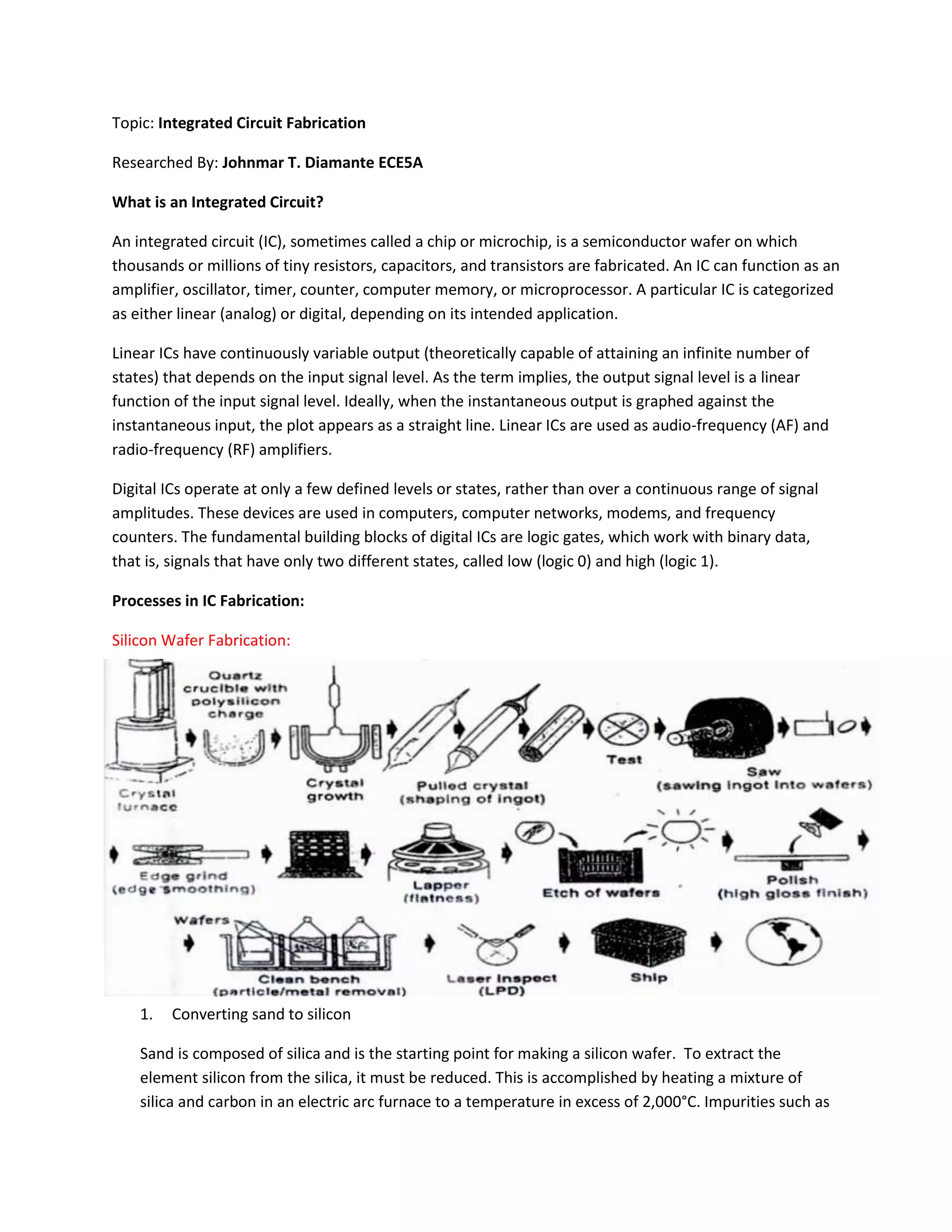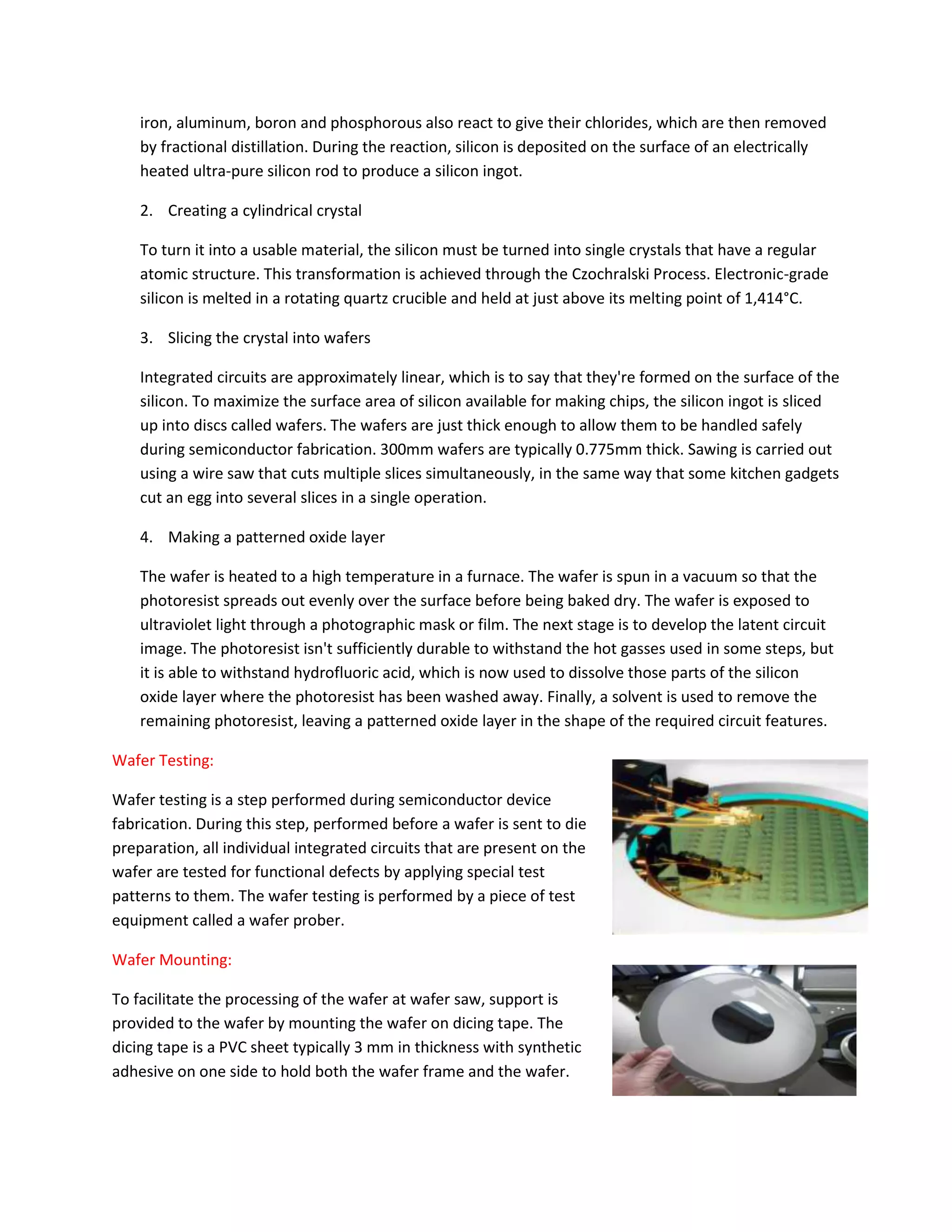An integrated circuit is a semiconductor wafer containing thousands of tiny resistors, capacitors and transistors. There are several key steps in the fabrication of integrated circuits:
1. Silicon wafers are created by slicing purified silicon crystals into thin discs.
2. A patterned oxide layer is formed on the wafer through a photolithography process using a mask to transfer circuit patterns to the wafer.
3. The wafer then undergoes several post-processing steps like dicing, die bonding, wire bonding and encapsulation before electrical testing verifies its functioning.




